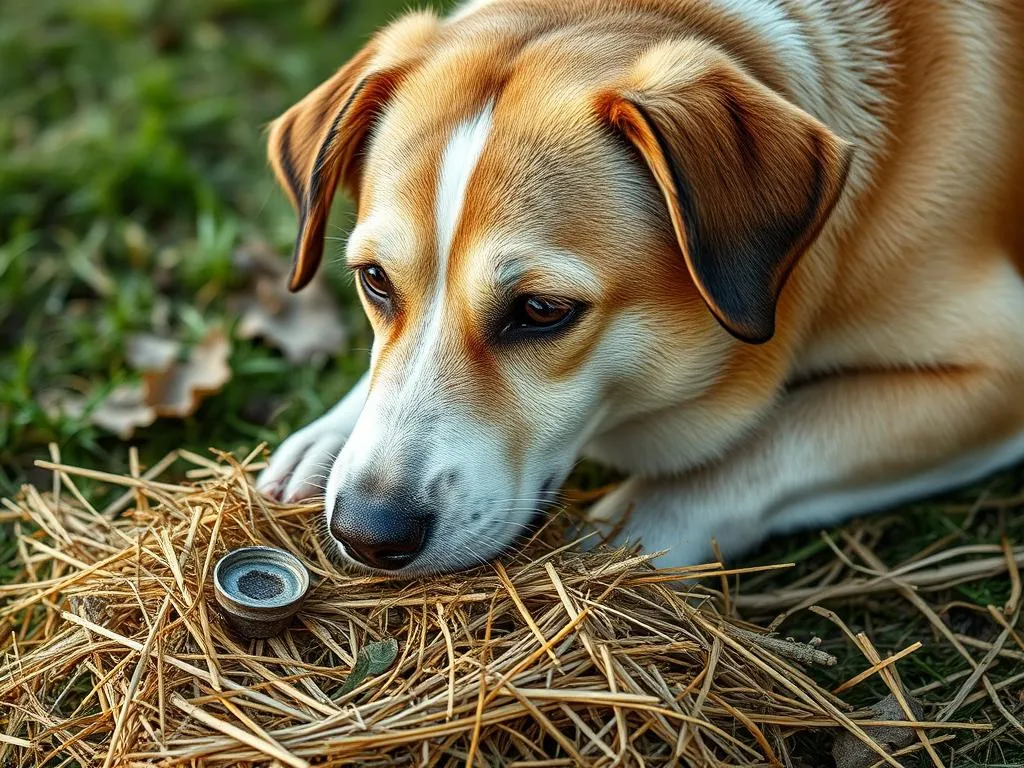
Introduction
Dog nutrition is a critical aspect of responsible pet ownership. A balanced diet is essential for the overall health and well-being of dogs, contributing to their growth, energy levels, and longevity. Just like humans, dogs require a variety of nutrients to thrive, including proteins, fats, carbohydrates, vitamins, and minerals. Common ingredients in dog food often include meat, grains, and vegetables, each serving a distinct purpose in fulfilling a dog’s nutritional needs.
In recent years, there has been a growing interest in alternative diets for pets. Pet owners are exploring various food options, including what might seem unconventional. This leads us to the question: can dogs eat hay? While hay is typically associated with livestock, understanding its potential role in a dog’s diet can provide valuable insights into canine nutrition.
Understanding Dog Nutrition
Basic Nutritional Requirements
To appreciate the role of anything in a dog’s diet, it’s essential to start with the basics of dog nutrition. Dogs require a balanced intake of macronutrients and micronutrients.
- Macronutrients:
- Proteins: Crucial for muscle development and repair, proteins are made up of amino acids, some of which are essential and must be obtained through diet.
- Fats: These provide a concentrated source of energy and are necessary for the absorption of fat-soluble vitamins.
-
Carbohydrates: While not essential, carbohydrates can be an excellent energy source and aid in digestion.
-
Micronutrients:
- Vitamins and Minerals: These are vital for various bodily functions, including immune response, bone health, and metabolic processes.
Common Dog Food Ingredients
Standard dog foods typically comprise a mix of the aforementioned nutrients, with high-quality ingredients being of utmost importance. Meat sources like chicken, beef, and fish are common, along with grains such as rice and oats, and vegetables like sweet potatoes and peas. The quality of these ingredients can significantly affect a dog’s health, making it crucial for pet owners to choose reputable brands.
The Role of Fiber in Dog Nutrition
What is Fiber?
Fiber is a complex carbohydrate that is not digested in the same way as other nutrients. It can be classified into two types:
- Soluble Fiber: This type dissolves in water and can help lower blood cholesterol and glucose levels.
- Insoluble Fiber: This type does not dissolve in water and aids in promoting healthy bowel movements.
Benefits of Fiber for Dogs
Incorporating fiber into a dog’s diet comes with numerous benefits:
- Digestive Health: Fiber helps regulate the digestive system, preventing constipation and promoting regular bowel movements.
- Weight Management: High-fiber foods can make dogs feel fuller for longer, helping to manage weight effectively.
- Regulation of Blood Sugar: Fiber can slow down the absorption of sugar, leading to more stable blood sugar levels.
Exploring Hay as a Dietary Option
What is Hay?
Hay is dried grass or legumes, often used as fodder for herbivorous animals like horses and rabbits. There are several types of hay, including:
- Timothy Hay: A popular choice due to its high fiber content and palatability.
- Alfalfa Hay: Richer in protein and calcium, making it more suitable for young animals or those needing extra energy.
Nutritional Content of Hay
Hay is primarily composed of fiber, making it an interesting option for dogs. It contains various vitamins (such as A, D, and E) and minerals (like calcium and potassium), although the exact nutritional profile can vary by type. When compared to traditional dog food, hay typically has a lower protein content but can be beneficial as a fiber supplement.
Can Dogs Eat Hay?
Safety Considerations
When considering whether dogs can eat hay, safety is paramount. While hay is not toxic to dogs, there are potential risks involved:
- Allergies: Some dogs may have allergies to specific types of grass or hay.
- Digestive Issues: Introducing hay suddenly into a dog’s diet can lead to gastrointestinal upset, including gas and diarrhea.
Benefits of Feeding Hay to Dogs
If given in moderation, hay can offer certain benefits:
- High Fiber Source: As previously mentioned, hay is an excellent source of fiber, which can aid digestion.
- Chewing and Dental Health: Chewing on hay can help keep a dog’s teeth clean and promote dental health.
Recommended Serving Sizes
When introducing hay to your dog’s diet, moderation is key. A small handful of hay can be a good starting point, gradually increasing the amount while observing your dog’s reaction. Always consult your veterinarian for personalized feeding guidelines based on your dog’s size, age, and health.
Alternative Fiber Sources for Dogs
Other Safe Fiber Sources
While hay can be a unique addition, several other sources of fiber are safe and beneficial for dogs:
- Fruits and Vegetables: Foods such as pumpkin, carrots, and green beans are rich in fiber and packed with nutrients.
- Commercial Fiber Supplements: Many pet stores offer fiber supplements specifically designed for dogs.
Homemade Dog Treats with Fiber
Creating homemade dog treats can be a fun way to incorporate fiber into your dog’s diet. Here are a couple of simple recipes:
- Pumpkin and Oat Treats:
- Mix 1 cup of canned pumpkin, 2 cups of oats, and a little water to form a dough.
-
Roll into small balls and bake at 350°F (175°C) for 20-25 minutes.
-
Carrot and Apple Biscuits:
- Combine 1 cup of grated carrots, 1 cup of apple sauce, and 2 cups of whole wheat flour.
- Roll out and cut into shapes before baking at 350°F (175°C) for 25-30 minutes.
Homemade treats not only provide fiber but also allow you to control the ingredients, ensuring quality and safety.
Conclusion
Summary of Key Points
Understanding dog nutrition is essential for every pet owner. The inclusion of fiber in a dog’s diet is vital for digestive health and overall wellness. While the question of can dogs eat hay is a valid one, it’s crucial to approach this dietary option with caution. Recognizing the potential benefits, such as high fiber content and dental health advantages, is important while also considering safety.
Final Thoughts
Before making any dietary changes, including the introduction of hay, it’s always best to consult with a veterinarian. They can provide guidance tailored to your dog’s unique needs. Focusing on a holistic approach to dog care ensures that your furry friend lives a happy and healthy life.
FAQs
Can all dogs eat hay?
Not all dogs may tolerate hay well. It’s important to consider individual allergies and digestive sensitivities before introducing it into their diet.
What should I do if my dog has an adverse reaction to hay?
If your dog shows signs of allergies or digestive upset after consuming hay, discontinue feeding it immediately and consult your veterinarian.
Are there any specific types of hay to avoid?
While most hays are safe, avoid hay that is moldy or contaminated, as it can cause serious health issues.
How does hay compare to dog food in terms of nutrition?
Hay is primarily a fiber source and lacks the protein and fat content found in traditional dog foods. It should be considered a supplement rather than a primary food source.
Incorporating new dietary options for your dog can be an enriching experience, both for you and your pet. Understanding their nutritional needs and exploring alternative sources like hay can lead to a more balanced and health-conscious approach to dog care.









